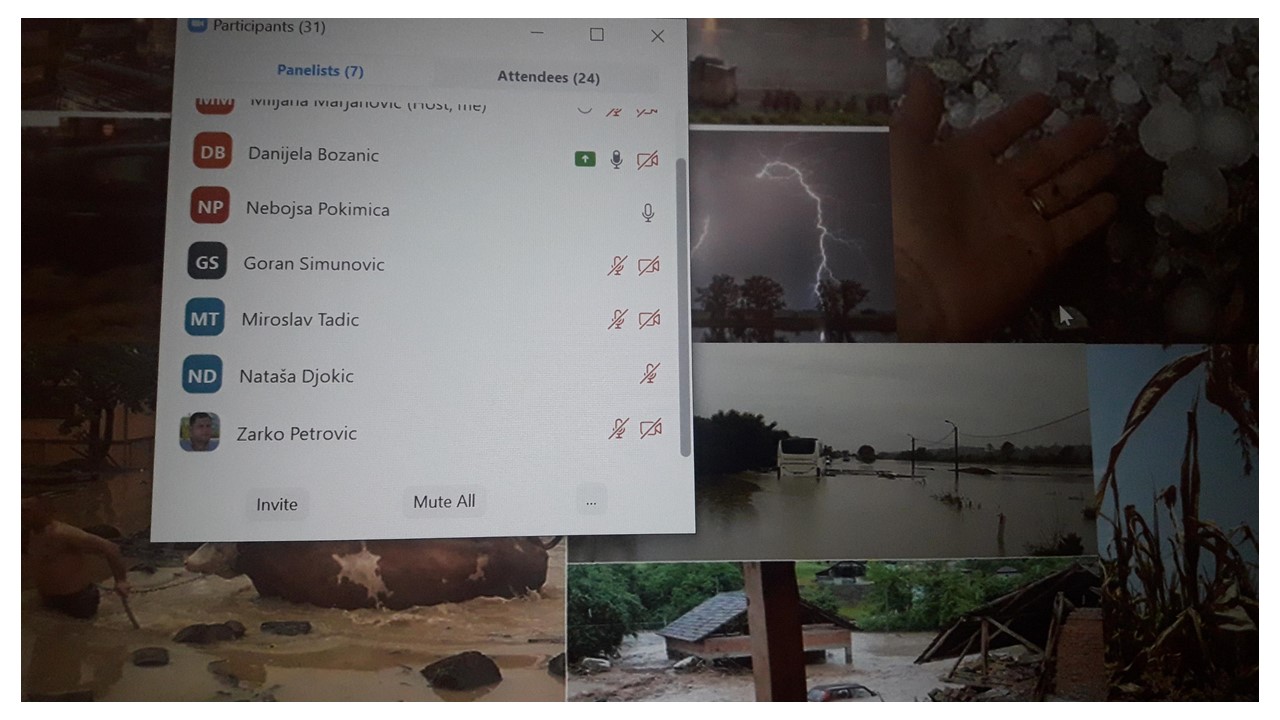-
Jul 03 2020 Webinar: “National adaptation plan (NAP) systematic and risk-shaped response to climate change”
The webinar, held on Friday, July 3th, 10:00 – 12:30, was designed to provide decision-makers and other target groups relevant to the NAP creation process with answers to the following questions:
Why NAP?
Process or policy document?
Formulation – support and experiences?
Integrating adaptation into planning and development plans?
National and local actors – roles and benefits;The goal of the webinar was to contribute to an easier understanding of the purpose, strategic and multisectoral nature of the NAP and the data and information that need to be provided for the functioning of the complete NAP cycle: planning – implementation – monitoring – improvement.
The relevant international framework has been presented at the webinar, primarily the Green Climate Fund, UN Framework Convention on Climate Change (UNFCCC) and the Paris Agreement, as well as the EU’s experiences.
This webinar has been the first in a series of planned ones, with the following goals:• Involvement of all stakeholders; and
• Focused and continuous discussion and exchange of information, as well as acceptance of the roles of all stakeholders in the NAP process.The structure and support for the formulation of NAP as well as the main experiences, roles and benefits of various actors in this process were presented at the webinar. It was stated that the main goal of the NAP GCF project “Advancing medium and long-term adaptation planning in the Republic of Serbia” is to establish a system and capacity for the integration of adaptation measures into national and sectoral development goals, decision making and investment planning and financing. It was pointed out that the development of the NAP is important in order of reducing the climate change risks and losses.
It was emphasized that, according to the official data of the Republic Hydrometeorological Institute, 2019 was the year of climate records in Serbia and projections of future temperature trends regarding the implementation of adaptation measures were presented, as well as the latest global analysis of the results of investments in climate change adaptation.
The participants were presented with the vision of the NAP for the Republic of Serbia. Sets of activities and their sequence during the NAP document development process as well as the sectors most affected by climate change: agriculture, forestry, water management, energy, transport and infrastructure have been identified.
It was noted that disaster risk reduction should be an integral part of planning in each of the affected areas and that the focus is on strengthening the capacity of all relevant actors.
The webinar was presented to a wider group of stakeholders – more than 30 attendees from relevant national, provincial and local institutions, public companies, academy and international organization.
At the end of the webinar questions and answers were discussed by all participants.
Below are some of the questions and answers that have been discussed:- What are the further plans in the field of regionalization of agriculture in terms of adaptation measures?
It was pointed out that the regionalization of viticulture has been completed and that the regionalization of fruit and livestock is underway, but that the future climate projections need to be entered within them, while the regionalization of farming is planned to begin. It was emphasized that the situation at the local level in this sphere is diverse and that there are examples of good practice, but that further work should be conducted in this segment. - Is there a standardization plan and data reliability control system at the national level?
It was indicated that in defining specific sectoral measures and activities, efforts will be made to base them on reliable sectoral data, but also to create quantitative and qualitative indicators for monitoring progress. The main goal is to merge all existing sectoral data into one central system in order to facilitate the availability of such data. The need for further work on the quality of data was emphasized. - Is it planned to cover the area of soil erosion within the project objectives?
The coverage of the area of soil erosion through a joint view of the agriculture and water management sectors has been identified. Insufficient accuracy of data in the field of soil erosion is noted.
- What are the further plans in the field of regionalization of agriculture in terms of adaptation measures?


